
GB Climbing Team coach and diversity programme developer Rachel Carr writes about the diversity problem in climbing, and shares ideas on how we can build a more actively inclusive sport.
When you walk into your local wall, how many people are there? Maybe 100 or so. How many of those faces are white? 40, 60, 95, maybe even 100? If you see someone from a different ethnicity, maybe Black, are they with other Black climbers, or are they surrounded by their white peers?
How many times have you walked into your local wall and seen the same diverse range of people that you might see on the streets you walk down to get to the wall itself? These may or may not be questions that you have asked or even considered before, but it is becoming increasingly apparent that these are questions that must be asked.
I know I can safely say that the difference is immense. I walk down the street and see different people, different faces and different cultures. But, when I step into most walls I see mainly white faces. I can pretend that I just don't know why, that there is no obvious reason, or that white people just inherently like climbing more than people of other backgrounds, but it's just not true.
Climbing has evolved so much over the years, from its early days as a majority white sport, consisting mainly of men exploring rock faces with minimal equipment, testing what was possible. It is now much more accessible year-round, with numerous indoor facilities and improved gear. The number of women participating is growing (from making up 29% of overall participants in 2018, to 35% in 2019). So why is it that climbing largely remains a white sport?
Recent studies have shown that, in general, UK Ethnic Minorities are less likely to be physically active. 57.7% of people of Black ethnicities and 53.9% of people of Asian ethnicities participate in physical activities, compared to 64.6% and 65.3% of White British and Other White people. This could explain why we see fewer people from Ethnic Minorities involved in our sport, but the difference in those stats does not relate to the differences in our sport.
Perhaps it's a financial issue? If this pandemic has demonstrated anything, it's that climbing walls are expensive to run, with most walls now being around £100,000 in debt after multiple lockdowns and limited capacities. You can see clearly that running costs are high, and therefore entry frees and memberships must be too, not to mention the added cost of coaching if you want to progress past a certain level. So, yes, some lower income groups would be counted out of getting into the sport easily without some sort of government funding.
Recent 2020 Race Report Statistics show that "Unemployment rates were significantly higher for ethnic minorities at 12.9 per cent compared with 6.3 per cent for White people" and "Black workers with degrees earn 23.1 per cent less on average than White workers". With climbing being new to the Olympics, there hasn't been a huge amount of financial support until now. Whatever funding was out there had to be spread across a whole lot of areas, from the top down and focused more on juniors thanks to Sport England support. This means it falls mainly to walls or local councils to foot the bill and get these people involved, which isn't easy.
Some councils offer inclusion sessions for troubled kids, some will pay for sessions for those with special educational needs, and some put climbing on the school curriculum. But this is a small number of people and such provision does not reach everyone.
If we ignore money altogether, because the reality is that not all people who have or might experience racism are poor, then it must show that for whatever reason, these groups don't get involved because they either don't feel safe or welcomed, or because they just don't know how.
I have spent the past 6 months developing a diversity programme to counteract the issues of the past and create the spaces for these groups to try climbing, get involved, join the community and even make a career in it. In this time I have spoken to several people from different backgrounds, communities and cultures and the answers I get most are: "No one is actually reaching out to the communities themselves"; "We haven't been offered anything even close to this before", and "Climbing isn't an option at these schools/colleges".
Why is it that no one is actually bothering to talk to these communities? Probably because they simply hadn't considered it till now, sheltering in their world as we all naturally do until shocked into expanding our thinking. But why haven't they been offered the same access to education as some others have? Why are more groups not offered opportunities to try climbing? It is a relatively accessible sport once you're in it. Other than the pricey shoes and memberships, if you boulder indoors you can do it on your own with minimal equipment.
So why aren't schools encouraging this as an extra-curricular in the way they might with other sports? In cities like Sheffield and London, with many walls scattered within walking distance of several school areas, perhaps the lack of school provision is simply down to a lack of awareness, or not having qualified people to take them?
Those who fall outside of the 'at-risk youth' or 'underprivileged' categories are not targeted. No one has spoken to the people that live on the streets surrounding the walls and shown them that they are welcome. And if no one is actively showing them, then we are passively, and often unintentionally, excluding them, since we are all still living and working in an institutionally racist society, as is evident in schools, employment and in the criminal justice system, to name but a few examples.
People from minority communities are likely to experience racism at least once in their life, so how can we expect them to trust our community without even trying to involve them? I feel excluded walking into most walls as a female. When I'm surrounded by 20 or 30 men and I'm the only female, I don't feel comfortable. In fact, I feel active discomfort, because they will quite often make comments, or give me looks, that often come from good intention, but that make me feel less than in myself.
I can't even begin to imagine what it would be like to have potentially five times that number doing the same thing and not see one person that I can even remotely relate to. Realistically, there are usually a couple of women around, but there are rarely other climbers with darker complexions, from different religions, with different cultures.
This disparity in numbers can have a huge impact on how people feel and relate to one another. I'm not saying that if we don't share the same skin tone or religion we can't be friends, but if you are worried that someone might ask where you are really from, then you are not going to want to be around a bunch of white people who may or may not have spent the past year trying to educate themselves because their school systems failed to.
When you think about it, it's not hard to understand why our climbing walls aren't more diverse, and quite frankly, the why doesn't really matter. What does matter is the how: how do we change it? It can be hard to know how to change something that is so engrained and established. So here are a few ideas and tips on what you can do to help.
Research
You've probably seen a bunch of people on your feed posting that well-meaning black square, and you may have even done so yourself. But, did you see the backlash from it? Did you see all of the Black people shouting to be listened to and not blacked out? They don't want to know you've noticed. They want you to do better, to educate yourself, to listen and learn.
Educate yourself in the history of our country. Learn about Windrush and the reality of why our country is so ethnically diverse. Follow different people on social media. If you look now, how many white faces will you see, and how many Black, brown or Asian faces are you not seeing, and not hearing from? Follow more people, and follow some pages that will help to educate you, to update you on things that the news might not, or follow some allies that will help you to learn, because it's not up to the people being oppressed to educate the ignorant. Please don't go and ask your friends of colour what you can do better — ask your white friends what we can do better.
Check yourself and others
Once you have researched and have awoken to a lot of the subtle racisms in our society, you should start to notice more racial stereotyping, or crude jokes. It is now your responsibility to call people out on them. To advise them why it is wrong, why it can make people upset or uncomfortable and to encourage them to educate themselves too. Not everyone is going to read this article, or that Instagram post, or hear that conversation, so you need to have more conversations with more people as often as possible.
You might even discover some things that you have said or done. Don't get upset and definitely don't get defensive. Racism has been spread through generations and slowly been drowned out to a quiet hum in the background of all the other noise. That doesn't mean it's not there, it just means it can be less obvious and often accidental, but it is still racism. It can be a certain phrase or term you have used in the past that may have become more commonly inappropriate or it may still be widely accepted amongst your friends, but again, that doesn't make it OK, even if it is "just a joke".
Actively involve
Invite your friends to come along and try climbing. They might never have considered it before because it's not something they grew up around, or none of their family have done it, but your work colleagues could love it and become your new climbing partner. I've said it before but I will say it again: it's terrifying to try something new, especially where you can't see anyone you can relate to.
Very few people see something as physical, puzzling and challenging as climbing, with no one else like them doing it, and think: "Yeah, I can be good at that". Show them they can trust you and be safe with you and take them along. Encourage and support them, and most importantly, keep inviting them back. Drop out rates are very high after 3 to 6 months for beginners in climbing. The more they get involved in the sport and its communities, the more likely people are to keep coming back.
Reach out
Talk to local communities, ask them if they are interested in climbing or want to try it. Volunteer to take people along and show them the way. Don't be intimidated by the fact you don't know them personally, just be patient and understanding, and don't get upset if they say no. You could even just tell them about it or how to get into it on their own; they don't really need you, but it is nice to offer the support in some cases. Sharing posts or sessions that are relevant online is a great way to start, but if your friendship group doesn't include these people from these communities, then they probably aren't going to see it.
Fund or create space
If you are involved in your local wall, either as a coach, manager, desk staff or maybe even owner, then it's up to you to create the spaces for a diversity of people to see and join. Money is tight for everyone, but since we can't really travel, you might have more time. Volunteer your time to run or support diversity-targeted sessions, either for beginners, improvers or training coaches. If people see sessions specifically for them then they may feel more welcome. Even better if these can be discounted, because if money is an issue for someone then they will be less likely to try it. If you are questioning why we need to support coaches — maybe you are thinking "They are already involved, does it matter?" — the more coaches we have for people to see and relate to, the more people will try it out. It all comes back to the same idea of safe, relatable spaces.
Maybe you don't work at a wall, can't teach others, but have some extra money lying around that you've saved by not going on holiday last year? Well, there are programmes dedicated to this work that need your support! Below are a varied list of groups that offer free coaching, coach education, casual meet ups and other ways to improve diversity in our sport. None of these groups have buckets of money lying around to spend on this, or they would have done so already. So put your money where it matters and support the causes closest to you.
What: Free coaching from beginner to elite, funding for coaching qualifications, a progressive pathway to improve involvement in all areas of the sport
Where: Currently based in the North with plans to expand UK wide
What: Taster Sessions, Supervisor training, Instructor training, outdoor sessions
Where: London based with potential expansion
What: Community group of climbers
Where: London
What: Community group of climbers
Where: Bristol


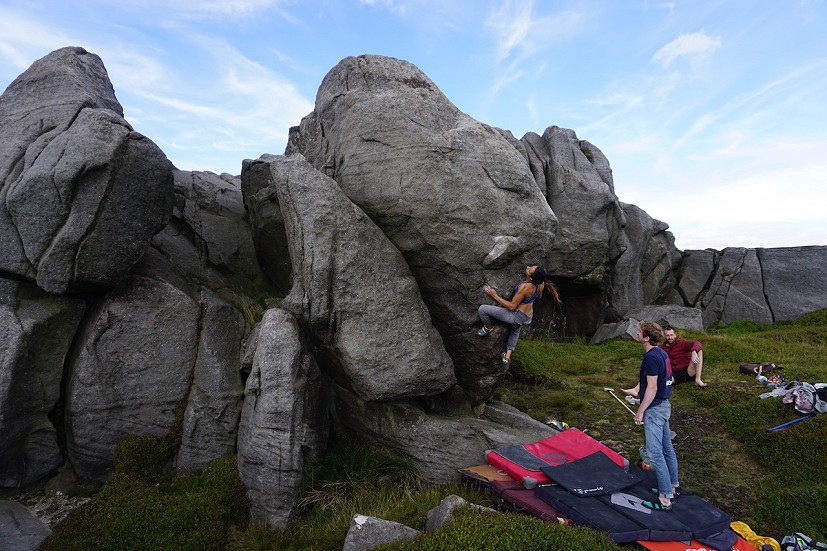







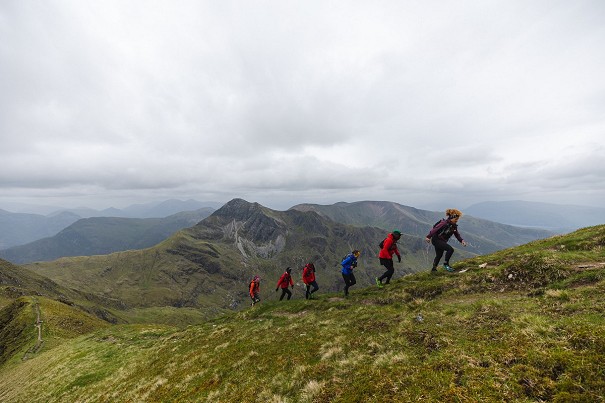
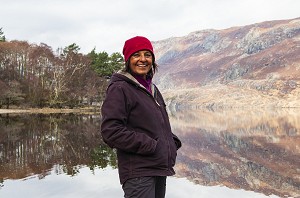
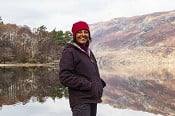


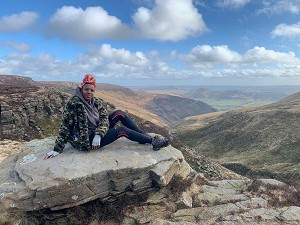

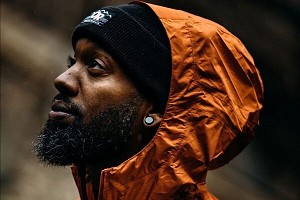


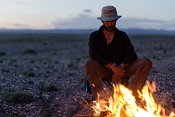
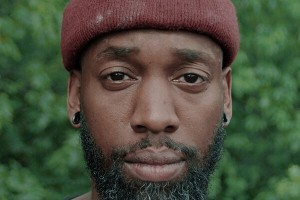
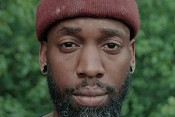

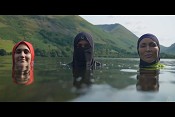
Comments
I genuinely don't know what to make of this piece - it is clearly very well intentioned, and makes some good points, but it doesn't feel quite right. I also suspect that there hasn't been any response as yet because people are afraid of saying the wrong thing, and being labelled.
I think that my unease with this article is at least partially predicated on a feeling that it is trying to reshape history into a particular narrative, one built around race.
Historically, climbing has often viewed itself in terms of class - a combination of the moneyed upper classes initially driving alpine exploration, and the working class heroes from the 1920's onwards. I'm not sure what response working class clubs like the Creag Dhu or the Ptarmigan clubs would have given to notions of "white privilege", but I'm pretty sure it wouldn't have been printable!
That said, climbing is changing. When (on occasion) I go to some of the bigger London walls, like the Castle, I see a lot of diversity. When I go to the crag, I don't see nearly as much (but then again, I don't see many people away from the honeypot crags). Climbing seems to have got much more middle class since I started 40 years ago - I don't see nearly as many working class folk out on the crags, and I would say that the diversity I see at the walls is amongst middle class folks - certainly all the BAME climbers I know are very solidly middle class.
I get the point about engaging with the communities around the crags and the walls. My local wall seems like a middle class oasis in a solidly working class area, and certainly doesn't seem representative of the local community. And as for engagement at the crag - when I started climbing in the Lancashire quarries 40 years ago, community engagement meant trying to stop them throwing rocks down at us!.
But I'm just not convinced that this is a race issue - it feels a lot more class based. I don't know what the answer is. Is there an issue with inclusivity - yes. There is definitely a gender bias in climbing, and there is most probably also a racial bias - but I'm just not convinced that structural racism is the cause - I think that this is most likely subordinate to the huge middle-class bias that definitely exists.
Sadly, I'm not convinced that we are moving in the right direction to tackle this. The best moment to engage people and get them into climbing and the outdoors is when they are young. Imagine you are a 12 year old seeing Shauna Coxsey at the Olympics and getting inspired. Climbing walls are expensive, kids aren't welcome unless they have supervising adults, and the youth climbing clubs and lessons are often oversubscribed. The clubs don't want to know young people because of safeguarding concerns. It doesn't matter what colour your skin happens to be, unless you are fortunate enough to be in a middle class family, it is unlikely that you will have the support network around you to enable you to get into climbing.
Interesting article and one I see having a great big assumption at its core; institutional UK racism: "Those who fall outside of the 'at-risk youth' or 'underprivileged' categories are not targeted. No one has spoken to the people that live on the streets surrounding the walls and shown them that they are welcome. And if no one is actively showing them, then we are passively, and often unintentionally, excluding them, since we are all still living and working in an institutionally racist society, as is evident in schools, employment and in the criminal justice system, to name but a few examples."
Hmm. Are we "all still living and working in an institutionally racist society, as is evident in schools, employment and in the criminal justice system?"
A certain government report said we are not. The report of the Commission on Race and Ethnic Disparities said in its foreword section: "We no longer see a Britain where the system is deliberately rigged against ethnic minorities. The impediments and disparities do exist, they are varied, and ironically very few of them are directly to do with racism. Too often ‘racism’ is the catch-all explanation, and can be simply implicitly accepted rather than explicitly examined."
It states: "The evidence shows that geography, family influence, socio-economic background, culture and religion have more significant impact on life chances than the existence of racism. That said, we take the reality of racism seriously and we do not deny that it is a real force in the UK."
Therefore I disagree with what I see is the core belief on which the article is based, that racism is the reason BAME people are under-represented in the UK climbing community.
I think secondary schools should encourage all their pupils to try sports, all sports, and that after that people who are inclined to try a particular sport should be encouraged and helped to do so. But leave it at that. There is no need to go beyond that and indulge in (what I think the writer is saying) white guilt and fight racism by getting more BAME people climbing. If they want to climb then great. If not, then equally great - there's more space on the indoor walls and outdoor cliffs for the rest of us.
Have you used UKC much?
run or support diversity-targeted sessions, either for beginners, improvers or training coaches. If people see sessions specifically for them then they may feel more welcome. Even better if these can be discounted, because if money is an issue for someone then they will be less likely to try it.
I think you might run into the Equality Act once you start pricing wall admission or coaching sessions based on skin colour.
Looks like Climb Unity are doing just that, quite worrying really.
This resonates.
One way diversity in climbing can be improved is by not seeing white people as a homogeneous collective. It alienates, over-generalises, and, provides fracture lines bad-faith actors can exploit.